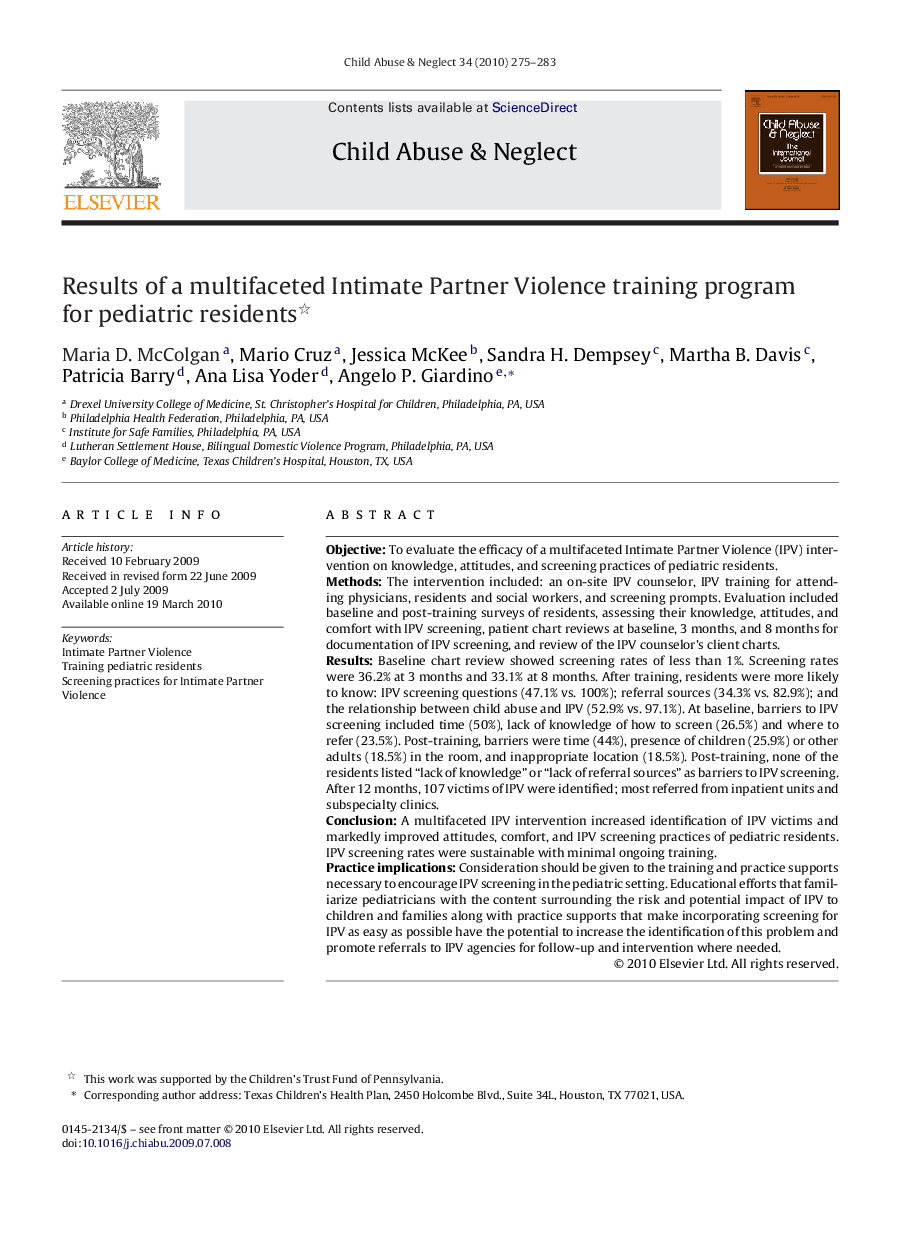| کد مقاله | کد نشریه | سال انتشار | مقاله انگلیسی | نسخه تمام متن |
|---|---|---|---|---|
| 345343 | 617507 | 2010 | 9 صفحه PDF | دانلود رایگان |

ObjectiveTo evaluate the efficacy of a multifaceted Intimate Partner Violence (IPV) intervention on knowledge, attitudes, and screening practices of pediatric residents.MethodsThe intervention included: an on-site IPV counselor, IPV training for attending physicians, residents and social workers, and screening prompts. Evaluation included baseline and post-training surveys of residents, assessing their knowledge, attitudes, and comfort with IPV screening, patient chart reviews at baseline, 3 months, and 8 months for documentation of IPV screening, and review of the IPV counselor's client charts.ResultsBaseline chart review showed screening rates of less than 1%. Screening rates were 36.2% at 3 months and 33.1% at 8 months. After training, residents were more likely to know: IPV screening questions (47.1% vs. 100%); referral sources (34.3% vs. 82.9%); and the relationship between child abuse and IPV (52.9% vs. 97.1%). At baseline, barriers to IPV screening included time (50%), lack of knowledge of how to screen (26.5%) and where to refer (23.5%). Post-training, barriers were time (44%), presence of children (25.9%) or other adults (18.5%) in the room, and inappropriate location (18.5%). Post-training, none of the residents listed “lack of knowledge” or “lack of referral sources” as barriers to IPV screening. After 12 months, 107 victims of IPV were identified; most referred from inpatient units and subspecialty clinics.ConclusionA multifaceted IPV intervention increased identification of IPV victims and markedly improved attitudes, comfort, and IPV screening practices of pediatric residents. IPV screening rates were sustainable with minimal ongoing training.Practice implicationsConsideration should be given to the training and practice supports necessary to encourage IPV screening in the pediatric setting. Educational efforts that familiarize pediatricians with the content surrounding the risk and potential impact of IPV to children and families along with practice supports that make incorporating screening for IPV as easy as possible have the potential to increase the identification of this problem and promote referrals to IPV agencies for follow-up and intervention where needed.
Journal: Child Abuse & Neglect - Volume 34, Issue 4, April 2010, Pages 275–283